Although it might not be every club’s, or every fan’s, favourite competition, the Copa del Rey manages to surprise us every year. While it is not a surprise that smaller clubs beat the bigger ones, it always brings a special flavour along the way. Barcelona travelled to Valencia to face the other Blaugrana of La Liga, Levante and experienced a déjà vu of some sorts.
The Frogs have once again successfully leapt over the Catalan giants to secure a huge win at Estadi Ciutat de València but the away team got one back in the final stretch to keep their hopes of a yet another title defence alive and kicking.
This tactical analysis will use statistics to explain how the underdog overthrew the favourite in an open battle for the quarterfinals of the tournament.
Lineups
Barcelona (4-3-3)
Starting XI: Cillessen – Semedo, Murillo, Chumi, Miranda – Aleña, Busquets, Vidal – Malcom, Dembele, Coutinho
Bench: Ter Stegen, Lenglet, Wague, Arthur, Denis, Puig, Sergi
Coach: Ernesto Valverde
Levante (3-5-2)
Starting XI: Aitor – Mayoral, Chema, Simon, Prcic, Coke, Postigo, Rochina, Cabaco, Boateng, Campaña
Bench: Koke Vegas, Toño Garcia, Doukoure, Morales, Pedro Lopez, Raphael, Jason
Coach: Paco Lopez
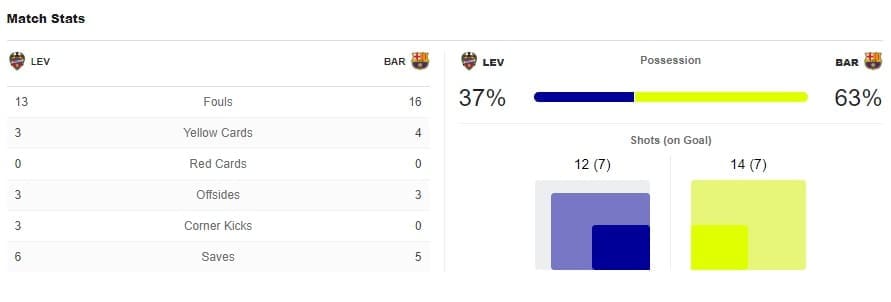
Barcelona’s set-up
The first part of the season is now firmly behind us and the hectic schedule for those who want to compete on all fronts starts now and is not going to slow down anytime soon. Barcelona are one of those contenders that chase the famous treble but this time, Ernesto Valverde has decided to prioritize Champions League over the cup.
This resulted in a completely shuffled deck without many of the big names. Jasper Cillessen was back between the sticks and was guarded by a completely new back-four that saw the debut of Jeison Murillo in a completely new partnership with Chumi, the Barcelona B defender, and with Semedo and Miranda on the full-back positions.
Sergio Busquets was the captain on the night in a midfield trio with Vidal and Alena. The front-three comprised Malcom, Ousmane Dembele and Philippe Coutinho. On paper, the Catalans operated in a 4-3-3 formation but swapped through different systems during the game.
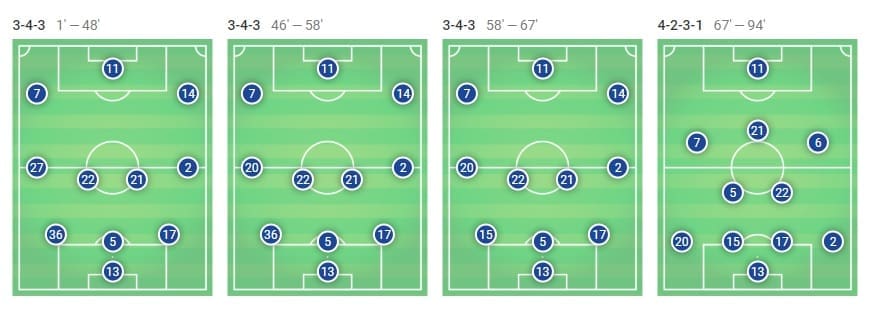
Levante’s set-up
The hosts also decided to rest some of their key players but approached this game with maximum intensity and determination. The main man in front of the goal was Aitor Fernandez who had the experienced Postigo to marshal the defence in front with Cabaco and Chema.
The middle of the park was highly congested with a total of five players mostly occupying those positions, depending on Rochina who was playing just behind the front line. Campana was the only member of that four-man squad that is a regular first-team player while the front tandem was made of Mayoral and Boateng.
Levante operated in a 3-5-2 or a 3-4-1-2 system throughout the whole game with some exceptions depending on the situation on the field.
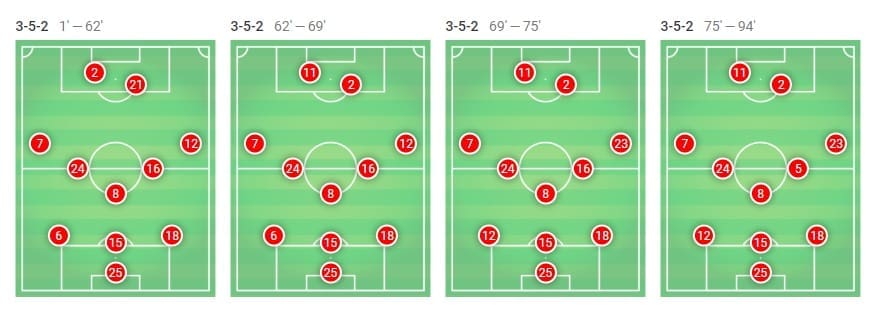
The cost of rotation
Ernesto Valverde is very well known for his tendency to not rotate the team, no matter what the situation currently is. Last year that meant that Barcelona got to lift the Copa del Rey trophy once again but the Catalans paid the price in the Champions League instead.
This time around, a different price was paid as the guests fielded a highly inexperienced squad that is not used to playing together. What followed was actually mostly expected but still disappointing.
Barcelona were not on the same page, which was seen from the very beginning but continued on throughout the whole game. “Only” 536 completed passes is below average for the Catalans and 94 losses of the ball might be the most glaring stats to prove that point.
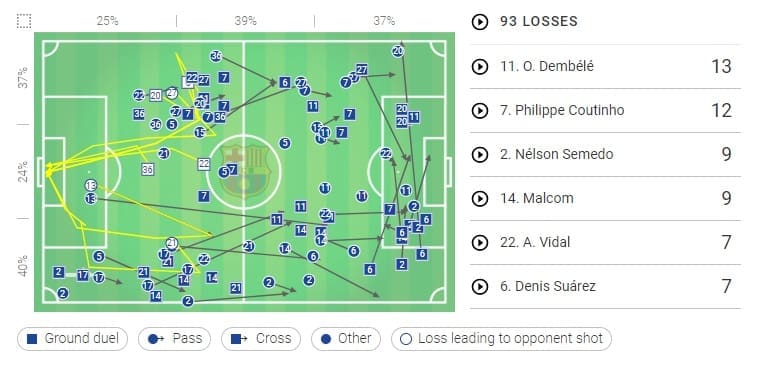
Notice how the majority of lost balls happened in midfield (39%), and even the pillars of the team like Sergio Busquets were prone to errors. The Octopus of Badia was actually the one directly responsible for the first goal that happened extremely early in the game.
Busi fails to cover his man after a set-piece, and Cabaco rattles the net after just three minutes of play in Valencia. Barcelona’s weaknesses with set-pieces continued in Thursday’s game but the Catalans were not solely vulnerable in the air.
The problem with the midfield was partly in the personnel but also partly in the style and the system that was implemented. Sergio Busquets would regularly slot in-between the centre-backs for support while the full-backs would act as wing-backs to form a sort of 3-4-3 system when attacking.
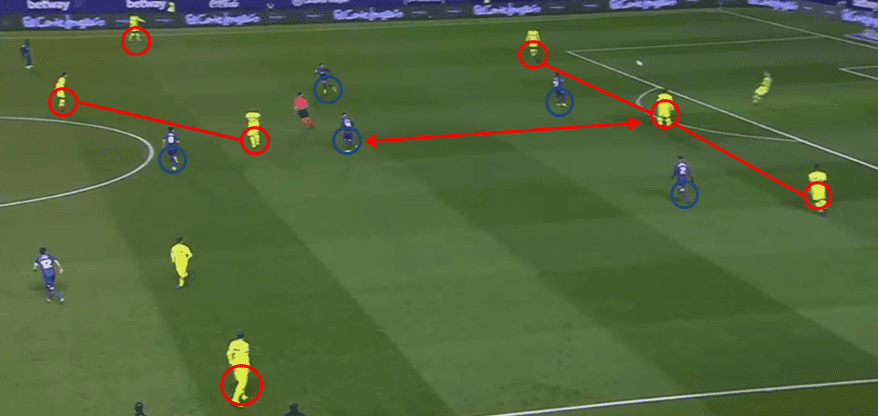
The midfield-four would then comprise of Vidal, Alena, Miranda, and Semedo but the gap between the back line and the middle of the park was not covered by anyone. Notice in the image above how upon Levante’s press, no Barcelona player comes to collect the ball or give Cillessen a chance to build from the back.
As a result, the Dutchman has to clear the ball and send it far away up the pitch where Barcelona did not have a real target man to collect it. That was the second problem they faced or actually third if we count incoherence as one as well.
In this system, without Lionel Messi and Luis Suarez, the front-three was made out of three wingers of sorts and Dembele had to compensate for the Uruguayan. While the Frenchman could do the job done fairly well, his off-the-ball movement and the impact Suarez usually has was lacking glaringly.
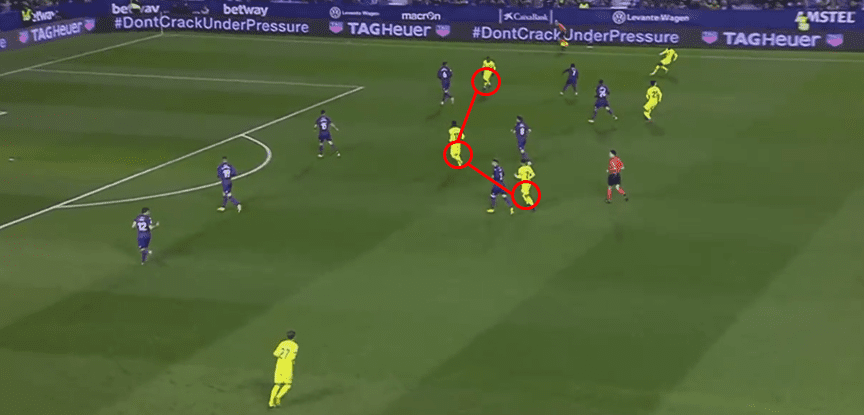
Both Malcom and Coutinho would in general cut inside to occupy their respective half-spaces which would mean that the only real width came from the full-backs who were more of true wing-backs in those cases. Whether it was the pure inexperience in that position or something else, Dembele couldn’t give the team the attacking edge he usually provides.
The attacking trio was also a bit cut off the rest of the team, as can be seen in the pass map below. Dembele was the one furthest up the pitch but his communication with the midfield is non-existent, as is the one between the other two forwards.
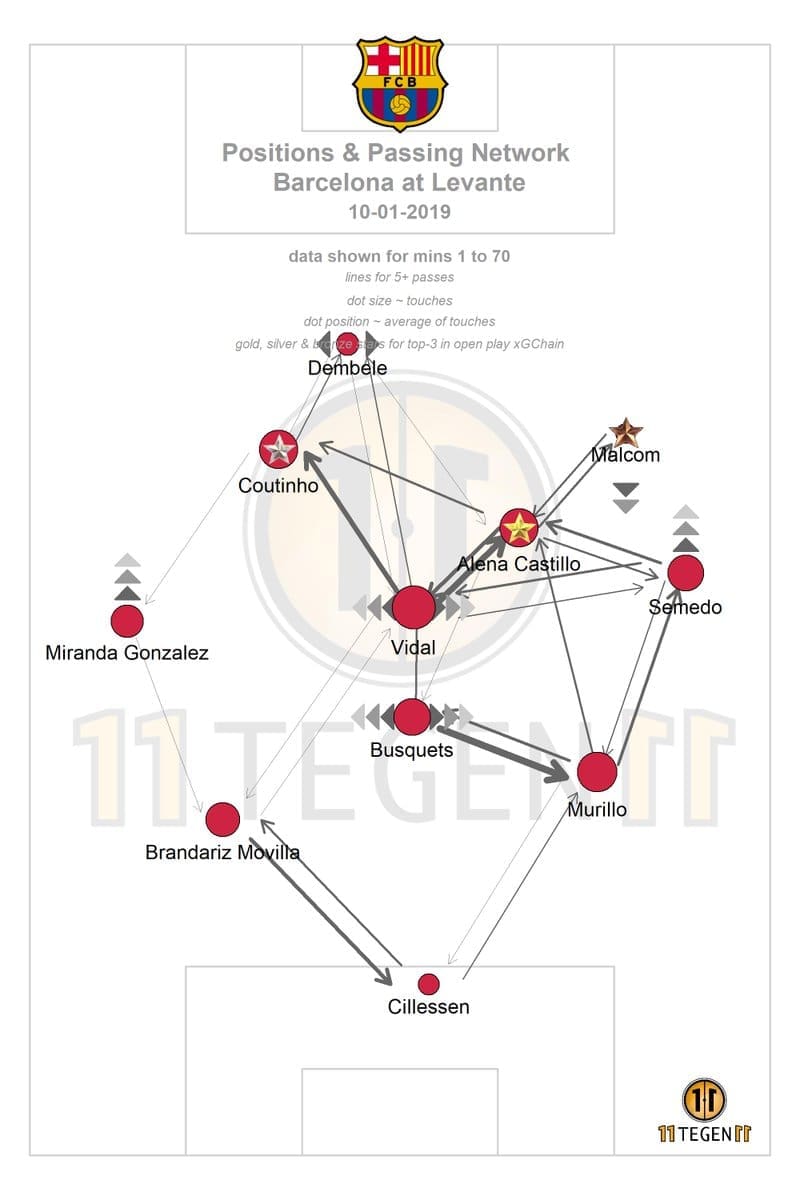
Malcom only managed 10 passes with a low 58% success rate while Dembele and Coutinho were the players with most loses of the ball in the game with 13 and 12 respectively. Not really a great day in the office for the “new guys.”
The courageous hosts
Levante is by now a very well known thorn in Barcelona’s side. Sure, they themselves received a thrashing not so long ago in La Liga but the extraordinary 5-4 victory to take the “invincibles” title from the Catalan last season will not soon be forgotten.
Back then, they played attractive, open football and created and finished numerous chances. Thursday’s clash was not so different. Out of possession, Levante would press heavily and try to outnumber the opposition in a quick manner.

Whether it was pressing the goalkeeper for a goal-kick or congesting the midfield to cut any passing lines, the Frogs of Valencia have done a great job at containing the opposition and setting up fast transitions.
Intercepting the passes, like in the image above, and forcing mistakes gave them chances for breaks and deadly counters.
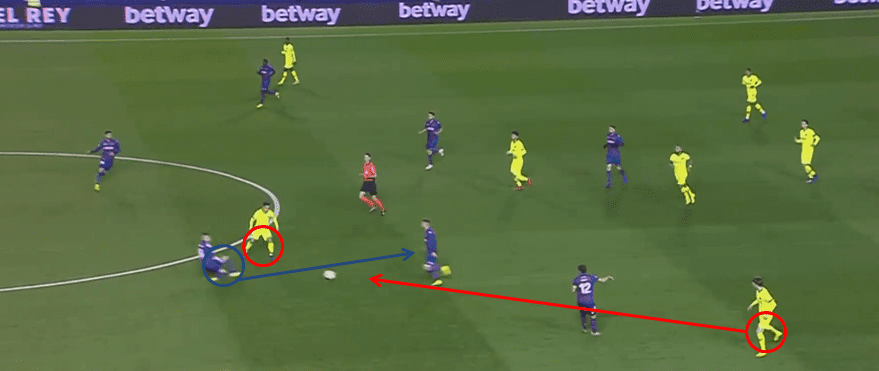
Once again, notice how many home players surround the opposition when they are trying to build-up the play. The progress of the ball is almost impossible without long passes or through the air, either by goal kicks or clearances. Barcelona’s inefficiency in the air meant that Levante would benefit from those.
The unlikely heroes
As much as this Barcelona squad lacked cohesion and coordination, there were some bright moments as Carles Alena, Denis Suarez and Jeison Murillo showed some quality. The middle man, Denis, who is more likely going to leave this January was impressive in particular.
His Messi-esque run to get his team in a great position and eventually, to win the penalty that gave them the away goal, was maybe the highlight of their play. Still, the new man in defence was also solid and probably the best piece of the defensive puzzle.
Three clearances and three interceptions for Murillo along with 11 duels won made for a great debut, albeit in a pretty experimental back four, if we can even say that the Catalans had four defenders present at all times at all.
On the other side of the pitch was Borja Maroyal, the Real Madrid boy who had an inspiring night against the best possible opponents. It was not only the goal but also how key he was in the hosts’ attack.
Alongside rattling the net, he also gave two key passes and created one big chance. We can also see from the pass map how crucial he was in the system and for the victory itself.
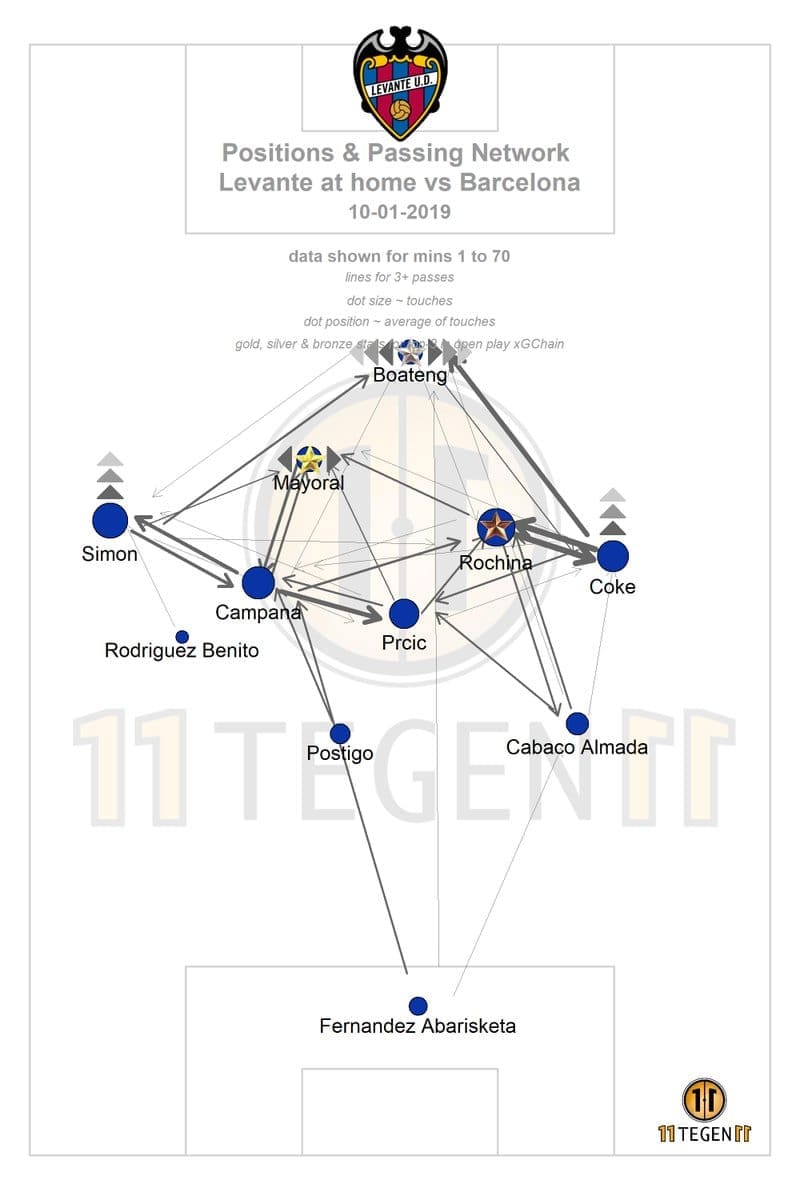
Conclusion
Not all is lost for Barcelona as they head into the second leg that is to be played on 17 January at the Camp Nou, the Catalan’s fortress. The away goal from Philippe Coutinho means that there is a lot more football to be played between these two teams and more thrill to come.
There are also positives to draw from Thursday’s defeat. Key first-team players have been rested and some other players made the most out of this chance they got. Now it’s up to Messi and co. to seal the deal and bring the team back to Copa glory.
If you love tactical analysis, then you’ll love the digital magazines from totalfootballanalysis.com – a guaranteed 100+ pages of pure tactical analysis covering topics from the Premier League, Serie A, La Liga, Bundesliga and many, many more. Get your copy of the FIRST of two December issues for just ₤4.99 here, or the SECOND of the December issues with an annual membership right here. Alternatively, you can pre-order the January issue NOW! It lands on Friday 18 January.

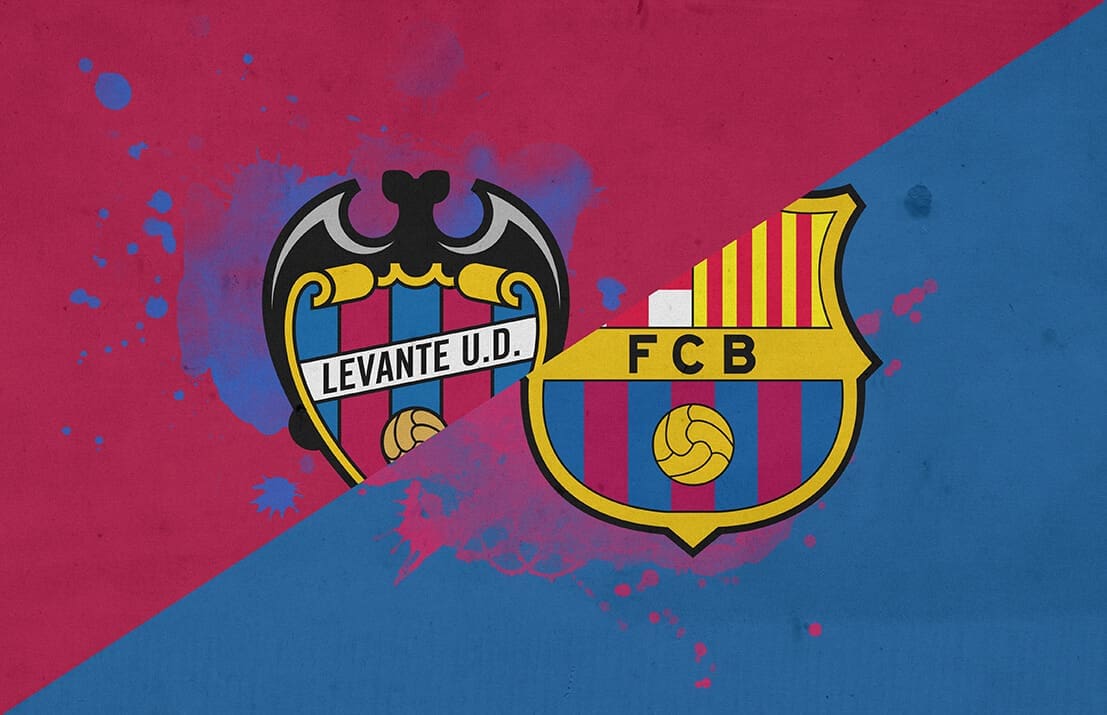



Comments